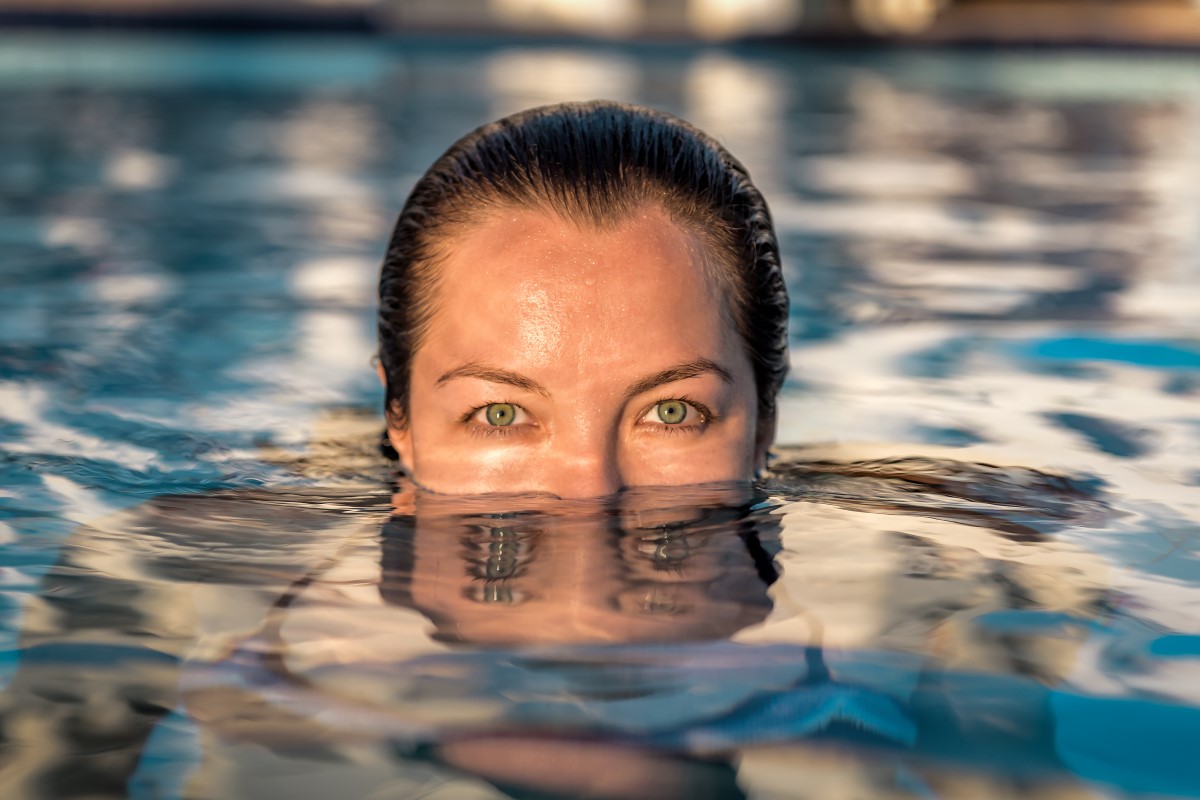
Can you swim with contacts? Do contact lenses fall out if you open your eyes underwater? Yes, they do! You risk losing them and getting an eye infection. It’s time to talk about the dangers of swimming with contacts what to do if you choose to wear them and the best goggles for contact lens wearers!
“Can you swim with contacts?” You really shouldn’t and here’s why…
Dangers of Swimming with Contact Lenses
Contact lenses are likely to fall out if you open your eyes underwater. Sometimes they might stay in if you open them for a moment. However, we advise against swimming wearing contact lenses.
According to the CDC, swimming and contact lenses do not mix. Bacteria from the pool or lake can get stuck under your lens. The most common bacteria found in water is called acanthamoeba. It can cause an infection called Acanthamoeba Keratitis, which is hard to treat. Symptoms include:
- Red eye
- Eye pain
- Light sensitivity
- Blurred vision
Be sure to visit an optometrist or eye doctor if you experience these symptoms.
Infection Treatment
Fortunately, eye infections are treatable. However, the methods used can often be painful and take a long time.
Cleveland Clinic suggests that treatment for acanthamoeba takes anywhere from six months to a year.
Typically, a topical antiseptic is used. This is put directly onto the surface of your eye. Healthcare provider sometimes scrapes off some of your cornea before applying the medication. It allows it to go deeper into your eye. Antibiotics and pain relief medications may also be used.
Surgery is only required if topical treatments are not effective. A corneal transplant might be needed. This is why it’s important to be careful around the water when wearing contact lenses.
Best Practices for Swimming with Contacts
If you must swim wearing contact lenses, there are some things to keep in mind. Our best practices can help you prevent eye infections!
1. Wear Waterproof Goggles
Wearing waterproof goggles stops bacteria from getting stuck under your contact lenses. Choosing the right goggles can make a difference when you go swimming. Check out this article for choosing the best non-prescription goggles.
If you are a serious swimmer, consider purchasing prescription swim goggles. With these, you won’t need to worry about wearing contacts. Some goggles cater to both recreational and competitive swimmers.
Your eyes will be safe from germs and bacteria while wearing prescription goggles. Chemicals like chlorine and bromine used to treat pools don’t stand a chance of getting in. Check out some of these prescription goggle brands:
- AquaSphere
- Sporti
- Aquasee
- Speedo
- Zoggs
- Swans
- Tyr
You can find these brands on Amazon, at Walmart or any other swim gear store.
2. Rinse With Contact Solution
Always rinse with contact solution before and after your swim sessions. Multipurpose contact lens solution rinses, cleans, disinfects, neutralizes and removes from protein buildup. This removes bacteria without scratching the lenses. Storing contact lenses in the solution keeps lenses hydrated.
However, there are differences between a saline solution and a contact lens solution. Saline solution:
- Should be used if your eye doctor recommends it
- Contains no cleansing agents
Remember that you should only buy commercially produced saline solutions. DIY versions cause cornea infections.
Contact lens solution is used more commonly. Keep its uses in mind when you go swimming:
- Conditions the lenses to be moist and wet on the surface of the eyes
- Keeps lenses sterile and hydrated when not in use
Follow the advice of your optometrist or eye doctor when using any sort of solution.
Knowing how to clean your contact lenses is an important part of keeping your eyes healthy.
3. Replace Contacts ASAP
Replace your contact lenses as soon as possible. The risk of infection is increased in water because there are plenty of germs. Acanthmoebascuses are one of the most common kinds of bacteria found in water.
Water causes the contact lens to change shape. In turn, it may expand or shrink and cling to your cornea. This can cause discomfort and scratch the surface of your cornea.
This could lead to blindness. So always replace your contacts after swimming with contacts or avoid doing it altogether.
Alternatives
If you are nearsighted, try out contact lenses called Nocturnal. Nocturnal™ are nighttime wear lenses that gently change the shape of your eye while you sleep. When you wake up and take out your nocturnal contact lenses, you will have clear vision all day. They are made to fit the exact contours of your eyes using topographic mapping and tailored to suit your needs.
You can also consider a more costly option. Lasik eye surgery will ensure you never have to worry about swimming with contact lenses again. Lasik eye surgery permanently corrects nearsightedness, farsightedness and astigmatism.
In Conclusion…
Swimming with contacts is risky and dangerous. Your eyesight is important and you must do what you can to protect yourself. Being informed to make better decisions is the first step. Now you can go out and have fun!


